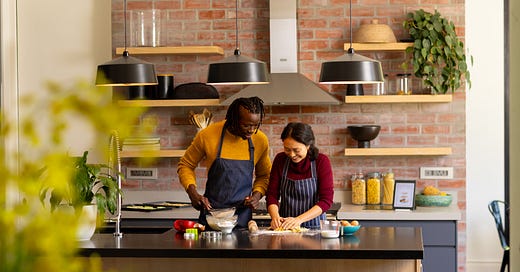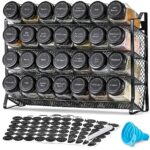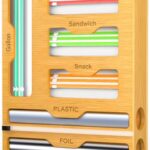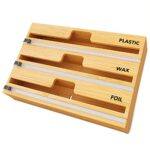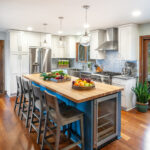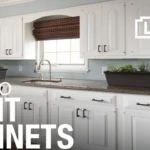Molding behind a kitchen countertop is called backsplash. It protects the wall from spills.
A well-designed kitchen is more than just functional. It’s a centerpiece of your home. One key element in kitchen design is the molding behind the countertop. Known as the backsplash, this feature serves both practical and aesthetic purposes. It shields your walls from water and food splashes, making cleaning easier.
At the same time, it adds a stylish touch to your kitchen. Different materials and designs can create unique looks. Understanding the role and options for backsplash molding can help you make the best choice for your kitchen. Let’s explore this essential element and see how it enhances your kitchen space.
Introduction To Kitchen Countertops
Kitchen countertops often feature a molding called an edge profile. This molding adds style and defines the countertop’s look. Various edge profiles offer different aesthetic and functional benefits.
Kitchen countertops play a crucial role in every home. They serve as the main workspace for food preparation. Besides functionality, they add to the kitchen’s visual appeal. Selecting the right countertop can transform your kitchen. It can make cooking more enjoyable and efficient.
Types Of Countertops
There are many types of countertops to choose from. Granite countertops are popular for their durability. They are also resistant to heat and scratches. Quartz countertops offer a sleek, modern look. They are also very low maintenance. Laminate countertops are affordable and come in many styles. Each type has its own benefits and drawbacks.
Importance Of Countertop Design
Countertop design greatly affects kitchen aesthetics. It can complement the overall theme of your kitchen. A well-designed countertop enhances the kitchen’s functionality. It provides ample space for cooking and entertaining. Choosing the right design is essential for a cohesive look. It also adds value to your home. So, take your time and choose wisely.
“`
The Concept Of Molding In Countertops
The concept of molding in countertops is a fascinating aspect of kitchen design. It adds both functionality and aesthetic appeal to your kitchen. Understanding molding can help you make informed choices for your kitchen countertops.
Definition Of Molding
Molding refers to the decorative trim that is placed along the edges of countertops. This trim can be made from various materials, including wood, plastic, or metal. The primary function is to provide a finished look to the edges of the countertop.
Molding comes in different styles and designs. Some are simple and clean, while others are more intricate and ornate. The choice depends on your kitchen’s overall design theme.
Purpose Of Molding
The purpose of molding goes beyond aesthetics. It serves several important functions in the kitchen. Here are some key purposes:
- Protection: Molding protects the edges of the countertop from damage.
- Aesthetic Appeal: It adds a decorative element, enhancing the look of your kitchen.
- Sealing: Molding can help seal the edges, preventing water or debris from getting underneath the countertop.
Molding can also be used to hide any imperfections or gaps between the countertop and the wall. This creates a seamless look in your kitchen.
In summary, molding is both a practical and decorative element in kitchen countertops. It helps protect, seal, and beautify your kitchen space.
Materials Used For Molding
Molding behind kitchen countertops is essential. It hides gaps and adds a finished look. Different materials offer unique advantages. Let’s explore the common materials.
Wood Molding
Wood molding offers a classic and warm appeal. It is easy to shape and install. Common types include oak, pine, and maple. Wood can be painted or stained to match your kitchen’s decor. It can be more prone to damage from moisture.
- Oak: Durable and has a natural grain.
- Pine: Softer and easier to work with.
- Maple: Hard and resistant to wear.
Plastic Molding
Plastic molding is versatile and cost-effective. It is available in a variety of colors and styles. Plastic is resistant to water and easy to clean. It can mimic the look of wood or other materials. It is less durable than metal.
- PVC: Lightweight and easy to cut.
- Polystyrene: Affordable and moisture-resistant.
Metal Molding
Metal molding is modern and sleek. It adds a contemporary touch to the kitchen. Common metals include aluminum and stainless steel. Metal is durable and resistant to damage. It can be more difficult to install.
- Aluminum: Lightweight and corrosion-resistant.
- Stainless Steel: Strong and has a polished finish.
| Material | Advantages | Disadvantages |
|---|---|---|
| Wood | Warm, customizable, easy to install | Prone to moisture damage |
| Plastic | Cost-effective, water-resistant, versatile | Less durable |
| Metal | Durable, modern, resistant to damage | Difficult to install |
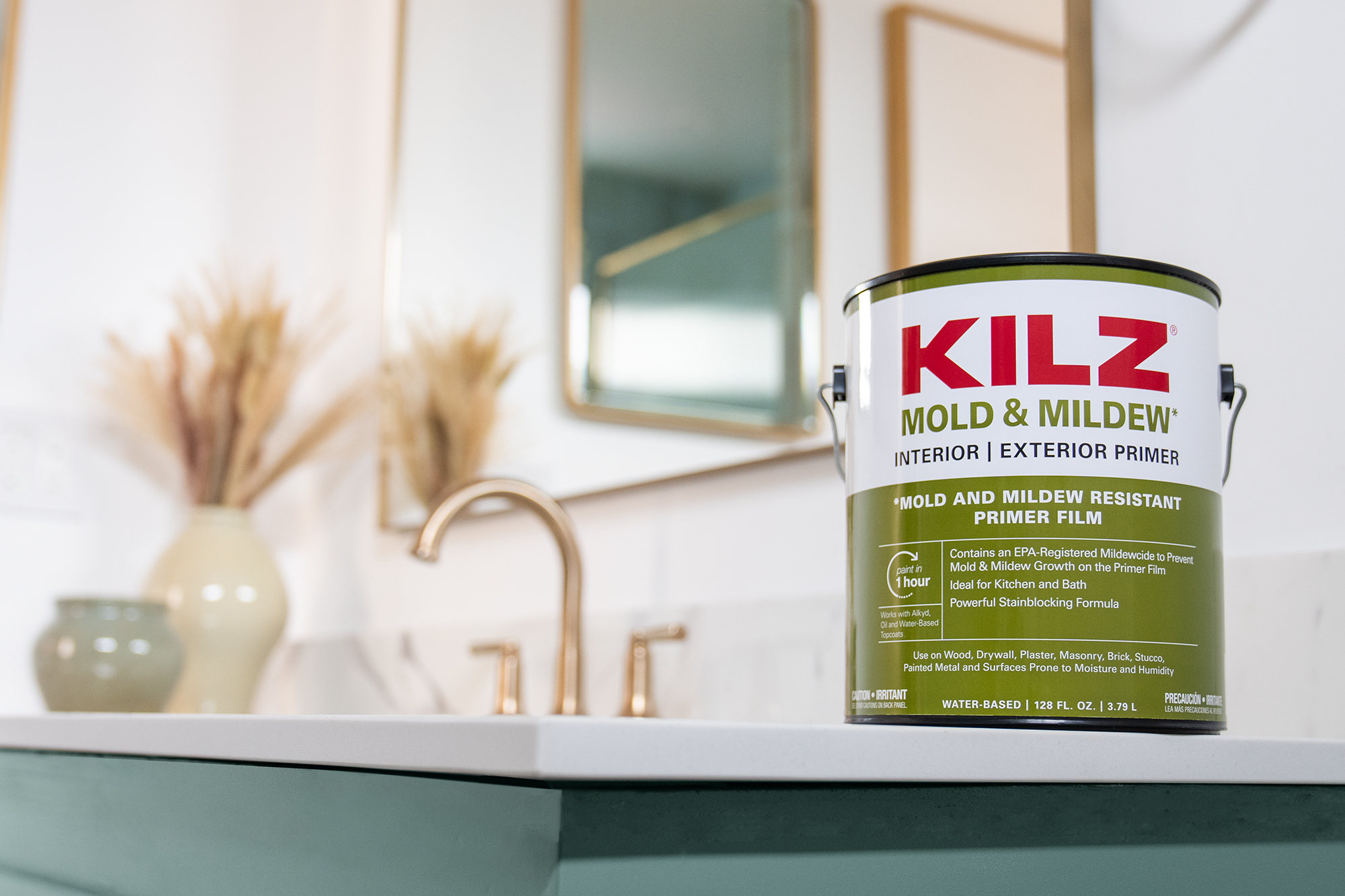
Credit: www.kilz.com
Popular Molding Styles
Adding molding to kitchen countertops can transform their look. It enhances aesthetics and adds a personal touch. There are several popular molding styles to choose from. Each style offers a unique charm and fits different kitchen designs.
Crown Molding
Crown molding is a decorative element placed between the wall and ceiling. It adds elegance and height to the room. In the kitchen, it can be used above cabinets. This creates a seamless transition to the ceiling.
Here are some key features:
- Ornate designs
- Various profiles and sizes
- Enhances traditional and modern kitchens
Base Molding
Base molding is installed at the bottom of cabinets. It hides gaps and provides a finished look. This type of molding protects the base from damage.
Benefits of base molding:
- Covers gaps between floor and cabinet
- Prevents dirt and debris collection
- Available in different materials and finishes
Custom Molding
Custom molding offers a tailored solution. It fits your specific style and preferences. With custom molding, you can mix and match designs.
Advantages include:
- Unique, personalized look
- Perfect fit for your kitchen
- High-quality materials
Choosing the right molding style is crucial. It enhances the beauty and functionality of your kitchen.
The Process Of Installing Molding
Installing molding behind a kitchen countertop can transform the look of your kitchen. This process requires careful preparation and precise techniques. By following the right steps, you can ensure a smooth and professional finish. Let’s dive into the details of the installation process.
Preparation
Start by measuring the area where you will install the molding. Accurate measurements ensure the molding fits perfectly. Clean the surface to remove dirt and debris. A clean surface allows the adhesive to bond well. Gather all necessary tools and materials. These include a saw, adhesive, nails, and a level.
Installation Techniques
Begin by cutting the molding to the correct length. Use a saw for clean and precise cuts. Apply adhesive to the back of the molding. Press the molding firmly against the wall. Ensure it aligns perfectly with the countertop edge. Use nails to secure the molding. Space them evenly for a neat appearance. Check the alignment with a level. Make adjustments as needed to keep the molding straight.
Choosing The Right Molding For Your Kitchen
Choosing the right molding for your kitchen can transform the entire space. Molding adds a finishing touch that enhances the beauty of your kitchen countertops. It provides an elegant transition between the countertop and the walls or cabinets.
Factors To Consider
Several factors should guide your choice of kitchen molding. Think about the style of your kitchen. Is it modern, traditional, or rustic? The molding should blend well with the overall design.
Consider the material of your countertops. Different materials may require specific types of molding. For instance, granite countertops might need a different molding compared to laminate ones.
Also, think about the height and thickness of the molding. It should be proportionate to the size of your kitchen and the countertops. Too thick or too thin molding can look out of place.
Design Compatibility
Your molding should complement the design of your kitchen. If your kitchen has sleek, modern lines, choose simple and clean molding. Avoid overly ornate designs that may clash with the modern look.
For a traditional kitchen, opt for molding with more detail and character. It can add a sense of history and charm to the space. In rustic kitchens, natural wood molding works well. It enhances the earthy and cozy feel of the room.
Color is also important. Match the molding color with your countertops or cabinets. This creates a cohesive and harmonious look. Or, choose a contrasting color for a bold and striking effect.
By considering these factors, you can select the perfect molding for your kitchen. It will not only improve the aesthetics but also add value to your home.
Benefits Of Quality Molding
Quality molding behind a kitchen countertop offers numerous benefits. It enhances the look, durability, and protection of your kitchen space. Let’s explore these benefits in detail.
Aesthetic Appeal
Quality molding adds a touch of elegance to your kitchen. It can match or contrast with your countertops for a cohesive look. Stylish molding can create a seamless transition between the countertop and backsplash. This enhances the overall design of your kitchen.
There are various styles and finishes to choose from. You can select molding that complements your kitchen theme. This makes your kitchen look well-designed and inviting. Aesthetic appeal is one of the most noticeable benefits of quality molding.
Durability And Protection
Molding behind the countertop acts as a protective barrier. It prevents water, food, and dirt from seeping behind the countertop. This helps keep your kitchen clean and reduces potential damage. Quality molding is made from durable materials. It can withstand daily wear and tear.
Using high-quality molding ensures longevity. It protects the edges of your countertop from chipping and cracking. This increases the lifespan of your kitchen surfaces.
Proper installation is key to maximizing these benefits. Ensure the molding is securely fitted and sealed.
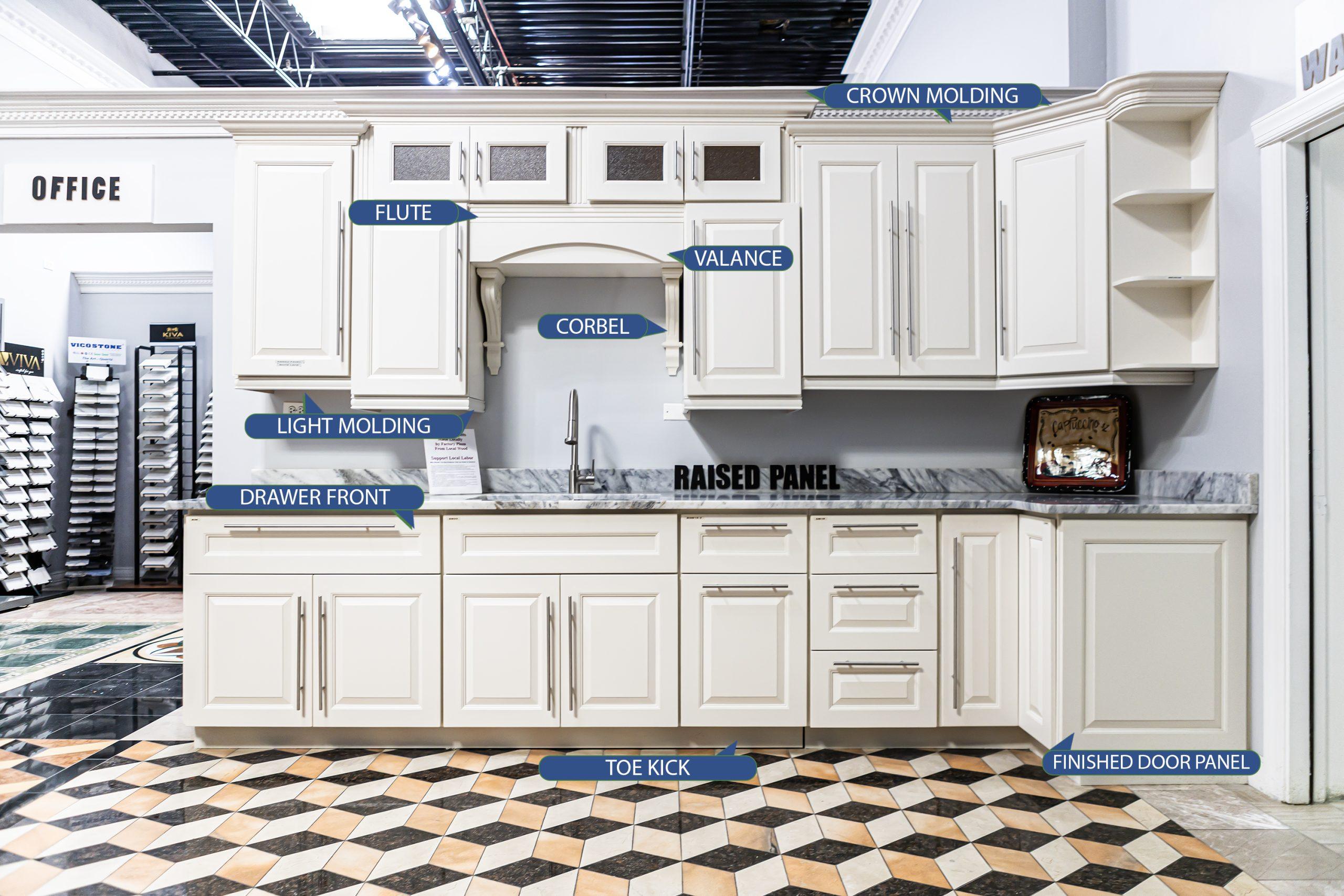
Credit: www.factoryplaza.com
Common Mistakes In Molding
When installing a kitchen countertop, proper molding is crucial. Mistakes can lead to issues like uneven surfaces or poor aesthetics. Here are some common errors to avoid in molding.
Incorrect Measurements
Incorrect measurements can lead to significant problems. Precision is key in molding. Even a small error can cause gaps or misalignment. Always double-check your measurements. Use a reliable tape measure. Measure twice, cut once.
Poor Material Choice
Choosing the wrong material can affect durability and appearance. Some materials may not withstand kitchen conditions. For instance, wood can warp with moisture. Consider materials like granite or quartz. They are durable and look great.
Maintenance And Care For Molding
Molding behind a kitchen countertop enhances the look and adds protection. Regular cleaning and sealing ensure its longevity. Proper care prevents damage and keeps it looking new.
Maintaining and caring for the molding behind your kitchen countertop is essential. This helps in keeping your kitchen looking fresh and clean. Proper care also extends the life of the molding.
Cleaning Tips
Regular cleaning is key. Use a soft cloth with warm, soapy water. Gently wipe down the molding. Avoid using harsh chemicals. They can damage the surface. For stubborn stains, a mixture of vinegar and water works well. Rinse with clean water and dry with a soft towel.
Repair And Replacement
Sometimes, the molding may get damaged. Small scratches can be sanded lightly. Use fine-grit sandpaper. For deeper damage, wood filler can help. Apply the filler, let it dry, then sand it smooth. If the molding is beyond repair, consider replacement. Measure the old molding. Purchase new molding of the same size. Follow the installation instructions carefully.
“`
Future Trends In Molding For Countertops
Future trends in molding for countertops are evolving rapidly. With the kitchen being a focal point of many homes, countertop designs are becoming more innovative. Homeowners seek both functionality and aesthetics. Molding plays a key role in transforming kitchen countertops. It adds a touch of elegance and personalization.
Innovative Materials
New materials are changing countertop moldings. Recycled materials are gaining popularity. These are eco-friendly and durable. Concrete is another trending material. It offers a modern, industrial look. It can be customized with various colors and textures. Quartz remains a favorite for its non-porous surface. It resists stains and scratches. It also offers a sleek and polished finish.
Modern Design Trends
Design trends are leaning towards minimalism. Clean lines and simple shapes are preferred. This gives a contemporary look. Bold and contrasting colors are also in demand. They create a striking visual impact. Textured moldings add depth and interest. They can mimic natural materials like wood or stone. Mixing materials is another trend. Combining different textures and finishes creates a unique look. It adds character to the kitchen space.
Frequently Asked Questions
What Is Molding Name Behind Kitchen Countertop?
The molding behind a kitchen countertop is called a backsplash. It protects walls from spills and splashes. Backsplashes come in various materials and designs.
Why Is A Backsplash Important?
A backsplash protects kitchen walls from water, grease, and food stains. It adds aesthetic appeal and makes cleaning easier.
What Materials Are Used For Backsplashes?
Backsplashes are made from tiles, glass, stainless steel, or stone. Each material offers unique benefits and styles.
How To Choose A Backsplash Design?
Choose a backsplash design that complements your countertop and kitchen decor. Consider durability and ease of cleaning.
Conclusion
Understanding the molding names behind kitchen countertops can be beneficial. It enhances your kitchen design knowledge. Plus, it helps in making informed choices. Each molding type offers unique benefits and aesthetics. With this information, you can now choose the best fit for your kitchen.
Remember, a well-chosen molding adds value and beauty. Happy remodeling!

